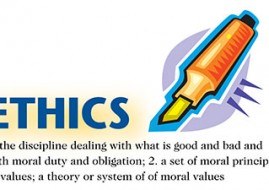Anti-Contact Rule & Subordinate Employees
By Hal R. Lieberman [Originally published in NYPRR January 2000]
My colleague Roy Simon has written an article, “Undercover Investigators & Disciplinary Rules,” which appears in NYPRR January 2000, in which he reviews in detail the facts and significance of Judge Scheindlin’s decision is Gidatex, S.R.L. v. Campaniello Imports, Ltd. [1999 WL731609, U.S. Dist. LEXIS 15589 (SDNY 10/4/99)].
In this article, I will discuss the impact of the decision on the anti-contact rule in DR 7-104(A)(1) and two other issues which are raised by the decision.
Gidatex, the plaintiff, owned a federally registered trademark, “Saporiti Italia,” for use on, or in connection with, furniture and accessories. For over 20 years Campaniello, the defendant, had been a licensed sales agent of “Saporili Italia” furniture in the United States. After Gidatex terminated Campaniello’s agency in 1995, Campaniello continued to use the trademark. Campaniello’s continued use was ostensibly in connection with its sale of genuine “Saporiti Italia” goods remaining in Campaniello’s stock at the time of termination, but was in actuality, according to Gidatex, to entice customers into its showroom and warehouse with signs and advertisements bearing the “Saporiti Italia” logo, and then selling furniture produced by other manufacturers. This illicit practice is called “palming-off.”
At Issue: Admission of Employee Statements
To prove that Campaniello was engaged in the practice of “palming-off,” Gidatex hired private investigators, posing as interior designers, who visited the defendants’ showrooms and warehouse, and secretly tape-recorded incriminating conversations with various salespeople. A key question in the trial, raised initially in a motion in limine, was whether the court should admit the statements recorded by the plaintiffs’ investigators posing as interior designers.
In addressing what at first blush might have been analyzed only as a civil issue, Judge Scheindlin nonetheless focused primarily on the applicability of several pertinent ethics provision, including DR 7-104(A)(1) [the anti-contact rule]. Judge Scheindlin considered whether, in violation of the anti-contact rule, plaintiffs’ counsel improperly communicated with, or caused another to communicate with, a “party” represented by a lawyer in the matter. Looking to New York ethics law for guidance, the Court noted that the Court of Appeals has defined “party” to include, in this context:
Corporate employees whose acts or omissions in the matter under inquiry are binding on the corporate (in effect, the corporation’s “alter egos”) or imputed to the corporation for purposes of its liability, or employees implementing the advice of counsel. All other employees may be interviewed informally. [Neisig v. Team I, 76 N.Y.2d 363, 374 (1990).]
Plaintiff’s Use of Evidence Controls
Based on the state law definition, Judge Scheindlin observed that Campaniello’s sales clerks were low-level employees without management responsibilities, and therefore would generally not be deemed “parties” under DR 7-104(A)(1) because they had no apparent or actual authority to bind the company and did not received, let alone implement, the advice of counsel. Judge Scheindlin nevertheless found that the plaintiffs were in fact seeking to use the sales clerks’ statements to impute liability to Campaniello. As a result, the court concluded that under these specific circumstance, the sales clerks must be considered “parties” for purposes of DR 7-104(A)(1).
Moreover, the court considered it “unrealistic” to claim, after years of related litigation between Gidatex and Campaniello, that because the defendants had not yet specifically retained counsel to represent them in this trademark dispute, plaintiffs’ counsel did not know that Campaniello was represented by counsel.
Directly confronting the issue posed by plaintiffs’ counsel’s apparent violation of DR 7-104(A)(1), the court concluded, notwithstanding the foregoing analysis, that counsel had not violated the anti-contact rule “because his actions simply do not represent the type of conduct prohibited by the rules.” The court stated:
The use of private investigators, posing as consumers and speaking to nominal parties who are not involved in any aspect of the litigation, does not constitute an end run around the attorney/client privilege. Gidatex’s investigators did not interview the sales clerks or trick them into making statement they otherwise would not have made. Rather, the investigators merely recorded the normal business routine in the Campaniello showroom and warehouse.
Broader Implications of Gidatex
In an earlier trademark, Professor Bruce Green (Fordham Law School) opined in an expert’s declaration submitted to the court, “a public or private lawyer’s use of an undercover investigator to detect ongoing in violations of the law is not ethically proscribed, especially where it would be difficult to discover the violations by other means.” [Apple Corps. Ltd., MPL v. Intl. Collection Soc., 15 F. Supp. 2d 456, 475 (D.N.J. 1998).] Judge Scheindlin’s decision in Gidatex is only the latest in an emerging line of cases and authorities which, in essence, stand for the proposition declared by Professor Green.
In its interpretation of the anti-contact rule, Gidatex illustrates an ambiguity in the definition of the term “party” delineated by the New York Court of Appeals in Neisig v. Team (supra). Judge Scheindlin concluded that the Campaniello sales clerks must be deemed “parties” for purposes of DR 7-104(A)(1), evidently because the plaintiffs were seeking to use the sales clerks’ statements to impute liability to Capaniello.
Alternative Definition of ‘Party’
Judge Scheindlin’s analysis overlooks an alternative interpretation of the term “party” that would assess the plaintiffs’ conduct in Gidatex as not violating the anti-conduct rule.
That interpretation is provided in the Reporters Note, at Comment e, §159 of Tentative Draft No. 8 (3/21/97) to the ALI’s Restatement of the Law Governing Lawyers. The Reporters, observing that as a matter of evidence law only a small category of agent “admissions” truly “bind” a principal (in the sense that no evidence contrary to the admission may be offered) state the following:
In most instances, however, an “admission” by an agent or employee does not bind the principal or employer; its only relevance is that, even if made out-of-court, it can be offered into evidence notwithstanding the hearsay rule. [See, e.g., Federal Evidence Rule 801(d)(2)(D); Restatement, Second, Agency §286.] The federal evidence rule, although titled “admissions by party-opponent,” merely excludes from the definition of hearsay (and thus makes admissible) “a statement by the party’s agent or servant concerning a matter within the scope of the agency or employment, made during the existence of the relationship…” Such evidence, of course, can be rebutted by the party against whom it is offered. Some decisions, mistakenly it is submitted, have included within the prohibition of Model Rule 4.2 (the anti-contact rule in the Model Rules) any agent whose statements could be used at trial against the interests of the principal. [Cagguila v. Wythe Labs, Inc., 127 F.R.D. 653, 654 (E. D. Pa. 1989).] The sweep of such a prohibition is extremely broad because under the evidence rules any agent or employee can make an “admission” and thus, presumably, would be beyond the limits of ex parte communication.
Unless the ALI’s interpretation is adopted, then, it is hard indeed to envision how any contact with a company employee, no matter how low-level that employee maybe, would not be proscribed on the theory that the employee’s admission might somehow bind the company.
But such a broad prohibition would negate the entire distinction that Neisig and §4.2 of the ABA Model Rules attempted to make by their carefully limited definition of a “party” in the context of statements by employees or agents. New York evidence law is also consistent with the Neisig interpretation. [See, Prince, Richardson on Evidence, §8-206 (11th ed., 1995).]
Application of Disciplinary Rules in Civil & Criminal Litigation
Judge Scheindlin’s opinion in Gidatex also raises the question whether, or how, the rules of professional conduct ought to be applied in the broader context of civil or criminal litigation. This is, of course, a matter that has been much discussed, but with no definitive resolution. Some courts consider any reference to rules of professional responsibility, except in disciplinary cases, to be contrary to the intended purpose of ethics rules and without legal foundation. [See, Schatz v. Rosenberg, 943 F.2d 485, 492 (4th Cir. 1991).]
However, the majority view is that reflected in the Gidatex case. In discussing the exclusion of evidence at the conclusion of her opinion, Judge Scheindlin noted that the rules she had just been analyzing [DR 7-104)A0(1) and DR 1-102(a)(4)], “are disciplinary rules, not statutes”, and that the Second Circuit has ruled that a court is not obligated to exclude evidence even if the evidence was obtained in violation of these ethical rules [citing United States v. Hammad, 858 F.2d 834, 8347 (2d Cir. 1998), evidence admitted notwithstanding prosecutor’s violation of anti-contract rule.]
Judge Scheindlin’s use of the disciplinary rules in her analysis of broader issues makes very good sense. Whether or not ethics rules are binding in non-disciplinary cases, they are often highly relevant to a determination of procedural fairness, among other issues. They clearly provide the courts with a large body of helpful precedents drawn from the ethical dilemmas lawyers face every day as litigators in the state and federal courts.
Hal R. Lieberman was formerly Chief Counsel to the First Department Disciplinary Committee. He now serves as counsel to the firm of Beldock, Levine Hoffman, LLP, in New York City.
DISCLAIMER: This article provides general coverage of its subject area and is presented to the reader for informational purposes only with the understanding that the laws governing legal ethics and professional responsibility are always changing. The information in this article is not a substitute for legal advice and may not be suitable in a particular situation. Consult your attorney for legal advice. New York Legal Ethics Reporter provides this article with the understanding that neither New York Legal Ethics Reporter LLC, nor Frankfurt Kurnit Klein & Selz, nor Hofstra University, nor their representatives, nor any of the authors are engaged herein in rendering legal advice. New York Legal Ethics Reporter LLC, Frankfurt Kurnit Klein & Selz, Hofstra University, their representatives, and the authors shall not be liable for any damages resulting from any error, inaccuracy, or omission.
Related Posts
« Who Is Your Client in Small Business Matters? Controlling Conflicts Between Old & New Clients »








